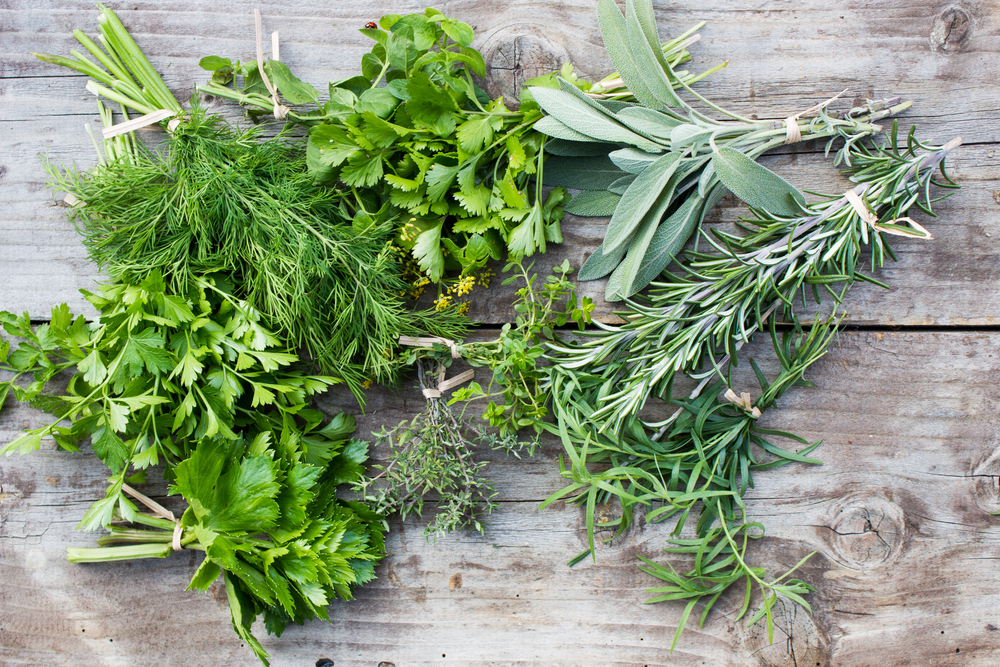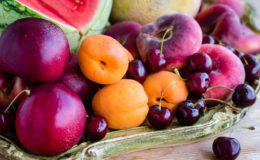Fresh herbs are the simplest way to enhance any dish in look, flavor, and nutrition and impress your friends too. For as little as a few cents, you can sprinkle some fresh herbal goodness on just about anything. Some dishes like salsa or tabbouleh have herbs as a main ingredient. Fresh herbs are the best:
- The plate looks more appetizing – All our senses come into play when we eat and when we think something looks good, it’s more likely to taste good too! Chefs know this and garnish any dish with something as small as a single leaf.
- The taste bursts with freshness – Garnishes are often listed as optional in many recipes. Whenever possible, don’t skip these important ingredients. Adding fresh herbs to soups, salads, appetizers, main dishes, and even desserts elevates the flavor complexity and freshness. Experiment with the herbs you like best and how they mix together.
- They add to the enticing aroma that kicks off the digestion process – Imagine an Italian Ragu without the oregano, salsa without the cilantro, or a borscht without the dill? Aromatic compounds in the herbs also support emotional wellness in a variety of ways.
- Fresh herbs are packed with nutrition – This is almost something we sense at a cellular level. Fresh herbs are more than decoration and flavor, they are nutritionally dense as well. The intense flavors come from important plant compounds that provide nourishment and medicinal properties too.
See the list below for nutritional highlights of common herbs and add some to your next shop:
- Basil is packed with vitamins C and K, zinc, calcium, magnesium, and potassium. Benefits of eating fresh basil include antioxidant and anti-inflammatory properties alongside the beneficial vitamins and nutrients. In addition, basil essential oil can be used topically to heal minor skin afflictions. Basil is most commonly used in Italian and Thai dishes.
- Cilantro (fresh coriander) also contains high amounts of vitamins A, C, and K and helps with lowering blood sugar, is antimicrobial, and has been shown to provide protection from foodborne illness. Essential ingredient in Mexican and Indian dishes.
- Dill is full of calcium and vitamin A. It is often used in Russian, Scandinavian, German, and Mediterranean cuisines. Vitamin A is good for immunity and vision. Calcium is essential for healthy bones.
- Marjoram supports hormonal health and anxiety relief. It contains folate, vitamins A and K, and is high in magnesium and potassium. Potassium is an electrolyte which hydrates and balances the body. Marjoram goes very well with egg, cheese, or tomato dishes and can be sprinkled on soups and salads.
- Mint supports digestion and has antibacterial properties. Mint is often used in mediterranean salads and lamb dishes. You can also make a fresh mint tea or add to fruity desserts.
- Oregano has antioxidants, fiber, vitamin K, manganese, iron, vitamin E, tryptophan, calcium and has antibacterial properties. Used in a variety of dishes, it is also found in medicinal herbal tea blends.
- Parsley contains plenty of vitamins A, C, and K. It also has a good amount of folate, an important vitamin for heart health. Vitamins A and C provide antioxidant properties while vitamin K supports bone health. Parsley can be sprinkled on pretty much anything, especially egg and poultry dishes. It contains some of the highest nutrition density of common herbs.
- Rosemary is high in manganese which provides anti-inflammatory benefits and supports metabolism amongst others. The aroma is also known to support memory. Rosemary works well with root vegetables and roasted meat dishes. A simple tea may provide headache relief and boost memory. Ancient scholars are said to have studied with a stem of rosemary tucked behind the ear.
- Sage contains vitamins A, C and K like most other fresh herbs. It is also high in antioxidants, has antimicrobial effects, and supports hormone balance.
- Tarragon has manganese, iron, and potassium. It can help to regulate insulin sensitivity. It also has vitamin B6 and folate. It is most often used in fish and poultry dishes.
- Thyme contains vitamins C and A, copper, fiber, iron, and manganese. Fresh thyme can be used in cooking meat, poultry, and white fish, and works wonders in a soup or stew.







